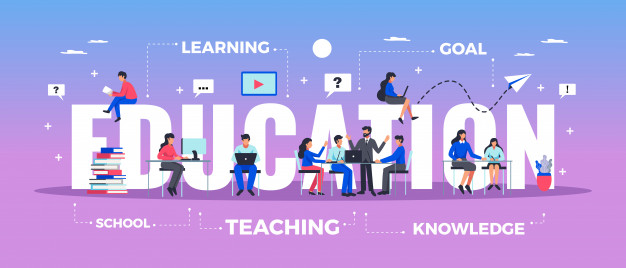All-Round Education and its Benefits


An All-Round Education is a process of self-actualization and learning that combines an individual’s mental, physical, social, emotional and spiritual growth. Keeping this vision intact, our school implements holistic teachings in our students’ education so that they can overcome challenges in their lives along with other academic subjects.
In the past decades, our knowledge regarding childhood development has expanded, and with it our teaching methodologies.
Today, parents and educators alike want more from their children’s education. They are looking for an approach to education that is in tune with each child’s unique needs and skills, and one that prepares the child to become a well-rounded adult.
As such, an All-Round/Holistic education is based on the idea that children can be taught in a more natural and engaging way. Rather than compartmentalizing school subjects, the holistic approach seeks to empower children to use their academic learning as a foothold for their emotional and social development.

The Benefits of All-Round Approach
Education is no longer just about learning tangible and measurable skills. Our past educational paradigms relied on the “average” measurements and standardization. Children were prepared to memorize information and then take placement examinations.
Although children should be prepped in core subjects such as mathematics, literature, or science, it is also important that they are taught how to learn. Holistic education redefines not only what a core subject is, but it also redefines how children should be taught.
The biggest benefit of a holistic approach isn’t just about mental development, but it encompasses psychological, social and emotional growth.
An All-Round approach motivates children to learn about a subject. It instills curiosity and allows children to learn naturally and creatively. It is also attuned to each child’s individual persona and learning style, in contrast of the current mass educational system.
As a result, children develop better communication and social skills, and better confidence. They feel good about learning and challenging themselves with certain subjects because these things offer positive associations.
Intrinsic motivation, in turn, propels them to be curious, inquisitive, and eventually be innovative adults in the workplace.
This methodology seeks to help children develop all their skills and to build their strengths.
As such, this educational approach is inclined towards play-based learning, children’s creativity, and their imagination. For instance, a holistic curriculum could include dance and stage performance, speech, photography, or painting (to name only a few) in addition to the “traditional” subjects.
More importantly, a holistic approach would encourage children to make connections between subjects-for instance, using their creative skills to solve a practical science or social problem, or approaching a foreign language similar to the way they approach a mathematical equation.
To conclude an All-Round Education is Fun and Meaningful. The objective of holistic education is to make learning so fun and meaningful that the child seeks it even when he is out of the classroom and this continues to fuel the child’s quest for lifelong learning and development.
Ms. Dipty
Teacher, BHIS Santa













